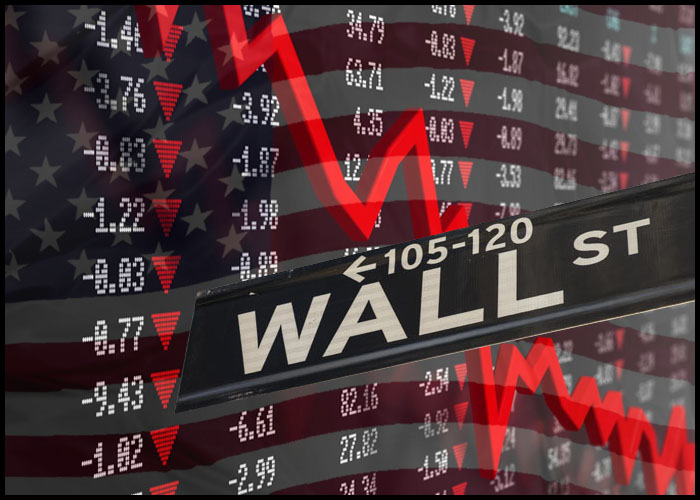U.S. Stocks Extend Sell-Off, Tumbling To Lowest Levels Since Late 2020
Stocks fluctuated in morning trading on Friday before once again coming under pressure over the course of the afternoon. The major averages extended the sharp pullback seen on Thursday, ending the session at their lowest closing levels since late 2020.
The major averages saw further downside going into the close, ending the session just off their worst levels of the day. The Dow plunged 500.10 points or 1.7 percent to 28,725.51, the Nasdaq tumbled 161.89 points or 1.5 percent to 10,575.62 and the S&P 500 slumped 54.85 points or 1.5 percent to 3,585.62.
For the week, the Nasdaq dove by 2.7 percent, while the Dow and the S&P 500 both plunged by 2.9 percent. The major averages also posted steep losses for the month and the quarter.
The extended sell-off on Wall Street reflected lingering concerns about the global economic outlook amid aggressive interest rate hikes by central banks around the world.
Adding to the negative sentiment, a reading on inflation said to be preferred by the Federal Reserve showed an acceleration in the pace of core consumer price growth in the month of August.
The Commerce Department report showed the annual rate of core consumer price growth accelerated to 4.9 percent in August from a revised 4.7 percent in July.
Economists had expected the annual rate of growth in core consumer prices, which exclude food and energy prices, to tick up to 4.7 percent from the 4.6 percent originally reported for the previous month.
The faster rate of price growth is likely to convince the Fed that it must maintain is aggressive stance regarding future rate hikes.
Meanwhile, the University of Michigan released a separate report showing one-year inflation expectations edged down to 4.7 percent in September from 4.8 percent in August, hitting the lowest level since last September.
Five-year inflation expectations also dipped to 2.7 percent in September from 2.9 percent in August, falling below the 2.9-3.1 percent range for the first time since July 2021.
“Inflation expectations are likely to remain relatively unstable in the months ahead, as consumer uncertainty over these expectations remained high and is unlikely to wane in the face of continued global pressures on inflation,” said Hsu.
MNI Indicators also released a report showing an unexpected contraction in Chicago-area business activity in the month of September.
A steep drop by shares of Nike (NKE) weighed on the Dow, with the athletic footwear and apparel giant plunging by 12.8 percent.
Nike fell sharply after reporting better than expected fiscal first quarter earnings and revenues but warning it will need to cut prices amid a surge in inventories.
Sector News
Interest rate-sensitive utilities stocks moved sharply lower over the course of the session, dragging the Dow Jones Utility Average down by 1.9 percent to its lowest closing level in over three months.
Significant weakness was also visible among semiconductor stocks, as reflected by the 1.7 percent drop by the Philadelphia Semiconductor Index.
Transportation stocks also saw considerable weakness on the day, with the Dow Jones Transportation Average falling by 1.6 percent.
Healthcare, retail and pharmaceutical stocks also moved notably lower, while gold stocks bucked the downtrend amid a modest increase by the price of the precious metal.
Other Markets
In overseas trading, stock markets across the Asia-Pacific region moved mostly lower during trading on Friday. Japan’s Nikkei 225 Index plunged by 1.8 percent, while China’s Shanghai Composite Index slid by 0.6 percent.
Meanwhile, the major European markets moved to the upside on the day. While the U.K.’s FTSE 100 Index edged up by 0.2 percent, the German DAX Index jumped by 1.2 percent and the French CAC 40 Index surged by 1.5 percent.
In the bond market, treasuries came under pressure over the course of the session after seeing early strength. As a result, the yield on the benchmark ten-year note, which moves opposite of its price, climbed 5.7 basis points to 3.804 percent.
Looking Ahead
The Labor Department’s monthly jobs report is likely to be in the spotlight next week, although traders are also likely to keep an eye on reports on manufacturing and service sector activity.
Source: Read Full Article

